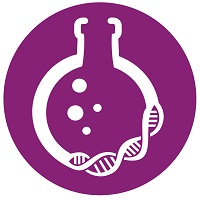Bioanalytics
Rapid Fires: Biomarker, Platform and Support
Practical Management of Conjugates for ADA and NAb Assays
Tuesday, November 11, 2025
3:15 PM - 3:30 PM CT
Location: 221 AB

Kuiyi Xing, PhD (he/him/his)
Principal Scientist
Celerion
Lincoln, Nebraska
Rapid Fire Speaker(s)
As electrochemiluminescence immunoassays (ECLIA) are increasingly used for immunogenicity assays, there is a growing awareness in the need of the reproducible performance of both biotin and SULFO-TAG conjugated critical reagents for immunogenicity assays.
Since biotin and SULFO-TAG conjugation may exhibit batch-to-batch variability even when following the same procedure, it is worthwhile to evaluate the generation, characterization, and storage of the conjugates at the outset of method development. Importantly, the assay performance of the conjugate should be assessed in addition to its concentration and incorporation ratio.
To mitigate the risks associated with batch variability, it is advisable to prepare a sufficiently large quantity of both biotin and SULFO-TAG conjugates for method development, validation, and sample analysis. With an optimal conjugate storage buffer, the conjugated critical reagents can remain stable for several years at -70°C or below. Additionally, the assay performance of the stored conjugated critical reagents should be monitored or retested periodically.
Since biotin and SULFO-TAG conjugation may exhibit batch-to-batch variability even when following the same procedure, it is worthwhile to evaluate the generation, characterization, and storage of the conjugates at the outset of method development. Importantly, the assay performance of the conjugate should be assessed in addition to its concentration and incorporation ratio.
To mitigate the risks associated with batch variability, it is advisable to prepare a sufficiently large quantity of both biotin and SULFO-TAG conjugates for method development, validation, and sample analysis. With an optimal conjugate storage buffer, the conjugated critical reagents can remain stable for several years at -70°C or below. Additionally, the assay performance of the stored conjugated critical reagents should be monitored or retested periodically.
Learning Objectives:
- Upon completion, participant will be able to recognize the role of biotin- and SULFO-TAG-conjugated reagents in electrochemiluminescence immunoassays (ECLIA) for immunogenicity assays.
- Upon completion, participant will be able to understand the potential impact of batch-to-batch variability in biotin and SULFO-TAG conjugation on the performance of assays for immunogenicity assays.
- Upon completion, participant will be able to learn the importance of optimal storage conditions for conjugated reagents to maintain long-term stability and ensure reproducibility in immunogenicity assays.


